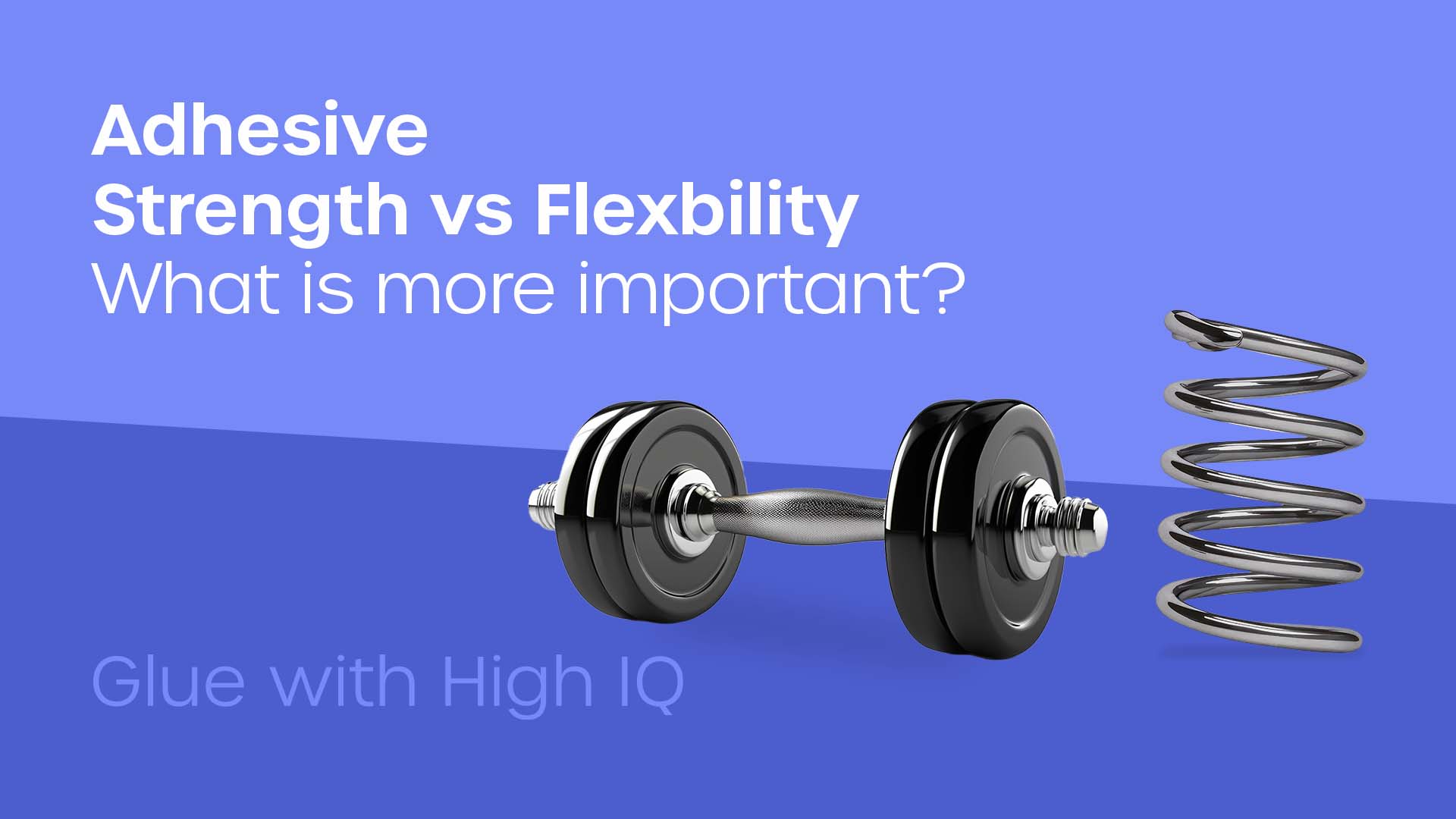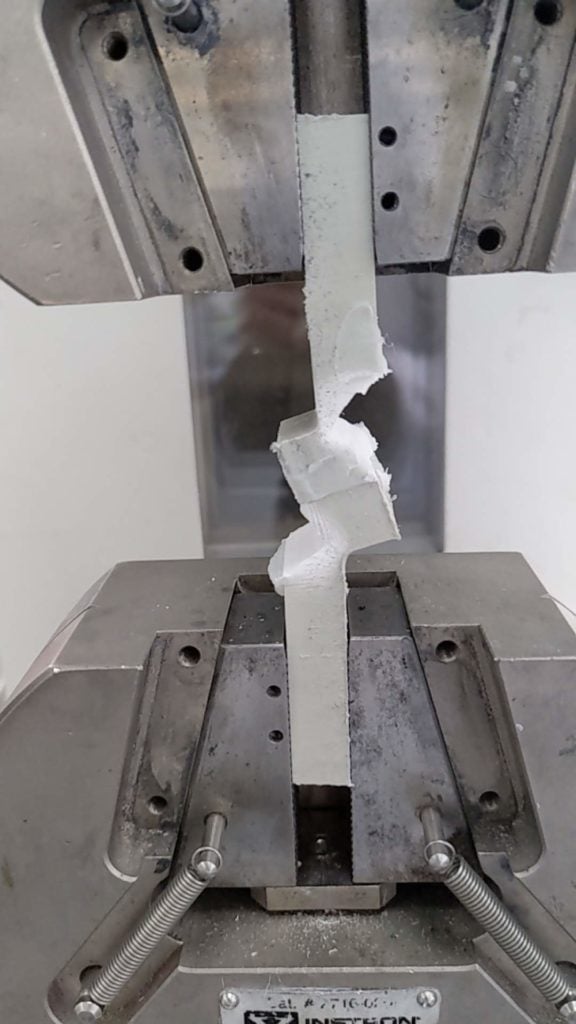Strength v Flexibility; What is more important in an adhesive?

When choosing an adhesive, most people look at strength as the most important factor. In fact, according to Google, the term ‘strongest glue‘ receives over 1000 searches every month. But the term ‘flexible adhesives‘ only gets 170 searches per month.
As adhesive manufacturers here at Forgeway, we can understand why this is the case. Who doesn’t want a strong glue? But a lot of people don’t realise that other factors are just as – if not more – important in an adhesive.
Here at Forgeway, we often tell our customers that flexibility is more important than strength in an adhesive. So we wrote this article to explain what the difference is, and why flexibility is so important.
By the end of the article, you will understand the difference between a strong and flexible adhesive, why they are each important, and what characteristic is more important for you.
What is a ‘strong’ adhesive?
As you could probably work out, a strong adhesive has high strength. The bond it forms between substrates has high tensile or shear strength. Tensile strength is the ability to withstand forces pulling constantly in opposite directions. Shear strength is the ability to withstand forces pulling parallel to the bond.
Megapascal (MPa) is the rating system for the strength of adhesives. Using a tensometer is the main testing method to establish the strength (MPa) of adhesives. The more force it takes for the bond to fail, the higher the strength rating of the adhesive.

Structural adhesives obviously must be strong as they are used to maintain the strength of the structure they are bonding.
Typically, a strong adhesive would have more than 3 MPa but adhesives with extremely high strength can achieve scores of more than 30 MPa.
What is a ‘flexible’ adhesive?
Flexibility refers to the adhesive’s ability to flex and stretch when under tension. Similar to strength testing, we would use a tensometer to test how flexible an adhesive is.
The flexibility rating is measured by elongation at break. The longer it takes for the adhesive to stretch and snap, the higher the elongation at break score. An adhesive with high elongation at break score would qualify as a flexible adhesive.
A ‘high’ elongation at break score is subjective, of course. However, we would say that a score of more than 300% would be high.
Why is strength important in an adhesive?
The reason strength is so important is simple. You need to ensure the substrates are going to stay in place. If the adhesive isn’t strong enough, the bond won’t be durable, and the bond on the structure will fail.
On the flip side of that, the adhesive can also be too strong. When the adhesive forms a bond that has greater strength than that of the substrate, the substrate itself will fail.
So choosing an adhesive with the right strength is massively important.
There are also a few occasions where strength is more important than flexibility:
- When using an adhesive to replace a weld
- When you need the adhesive to transfer shock to the substrate
- Where the bond is under static load (like a shower panel on a wall).

Why is flexibility important in an adhesive?
So while adhesive strength is what will hold the substrates in place, flexibility is what will maintain that strength when exposed to shock or vibrations.
Flexible adhesives can spread the tension along their surface area. They absorb energy rather than transfer it to the substrate(s).
Rigid materials like glass and most metals often don’t have enough flexibility to absorb this stress themselves. This is particularly the case if the structure you are bonding is going to experience a lot of movement.
Vehicles are a prime example of this. Bonding glass on vehicles is renowned to be a very difficult task. The adhesive needs to be strong enough to hold the glass in place, but – more importantly – it must be able to absorb any shocks or vibrations.

Vehicles (including boats, trains, and aeroplanes) are all examples of where you need a flexible adhesive because of the obvious movement they experience. However, the movement isn’t always this obvious.
Some materials are prone to thermal expansion and contraction. Even though you might think the structure is not going to experience movement (like with a cladding panel), the expansion and contraction it experiences is still movement. The adhesive you choose will have to accommodate this movement.
Effectively, any bond that is going to experience movement will need an adhesive that has at least some flex.
Strength v flexibility – what is more important to you?
So many people get caught up on the strength of the adhesive. They spend hours determining whether the adhesive will be strong enough for them. However, as you have learned in this article, strength isn’t the only factor you need to worry about.
As adhesive manufacturers, we understand that strength will be one of the main factors you consider when choosing an adhesive. By this point, you should understand as well as we do that flexibility is as important as strength.
When the structure you are bonding isn’t going to experience any movement and the substrates are very high strength (like metal), strength is more important than flexibility.
On the other hand, if the structure is going to experience movement, flexibility is more important than strength.
If you are a bit unsure about whether you need to consider flexibility when choosing an adhesive, we recommend reading chapter six of our Ebook which discusses joint design. It will help you decide whether you need a flexible adhesive.
However, if you are still totally stuck about what you need to do, a member of our team will be able to help you establish whether strength or flexibility means more to you.
Thomas is the Content Manager here at Forgeway. Thomas' job is to translate the technical jargon from the ivory tower of academia into easy-to-read content that everyone can understand. Forgeway's mission is to answer every question our customers and prospective clients ask, or are apprehensive to ask.
Topics:


